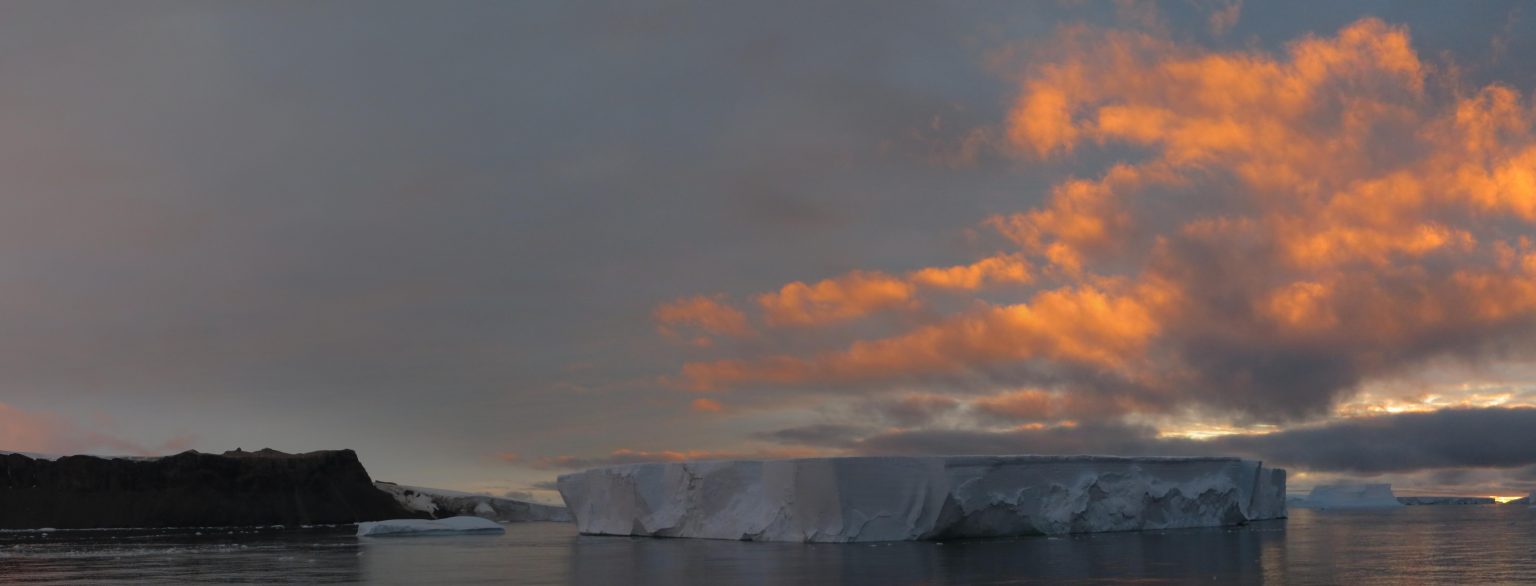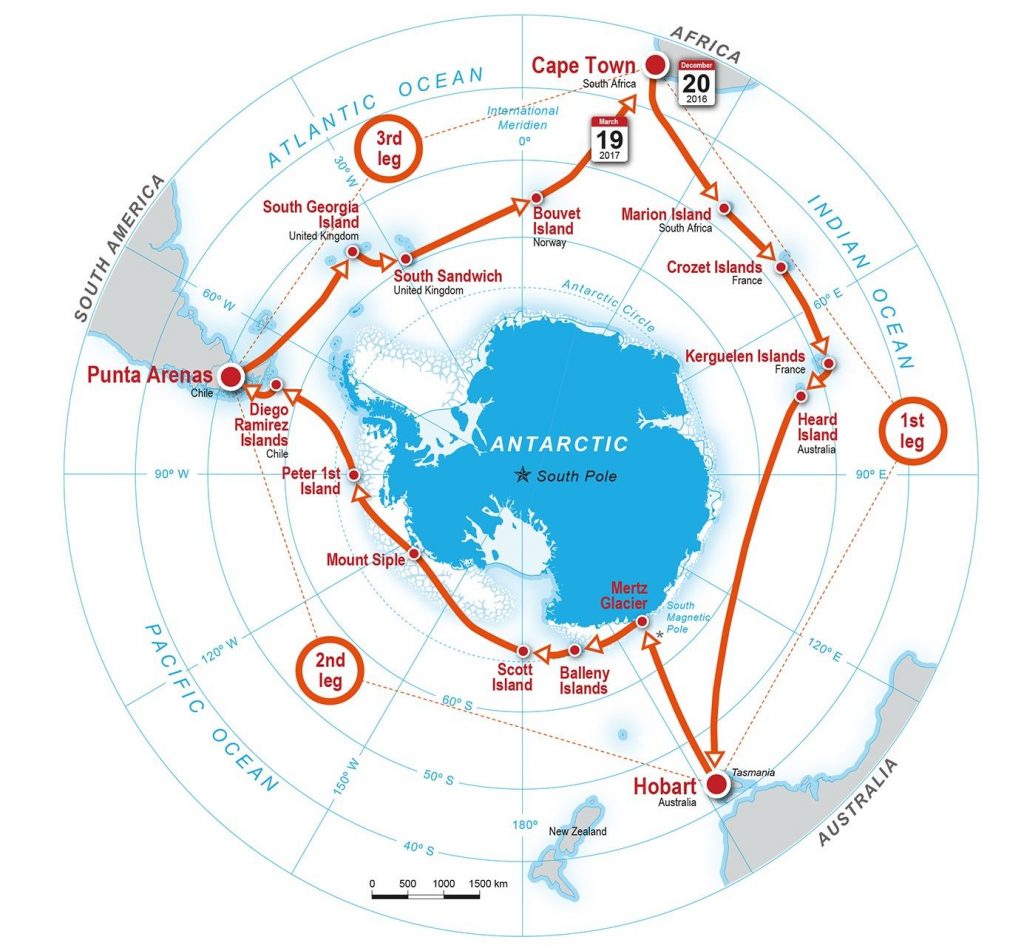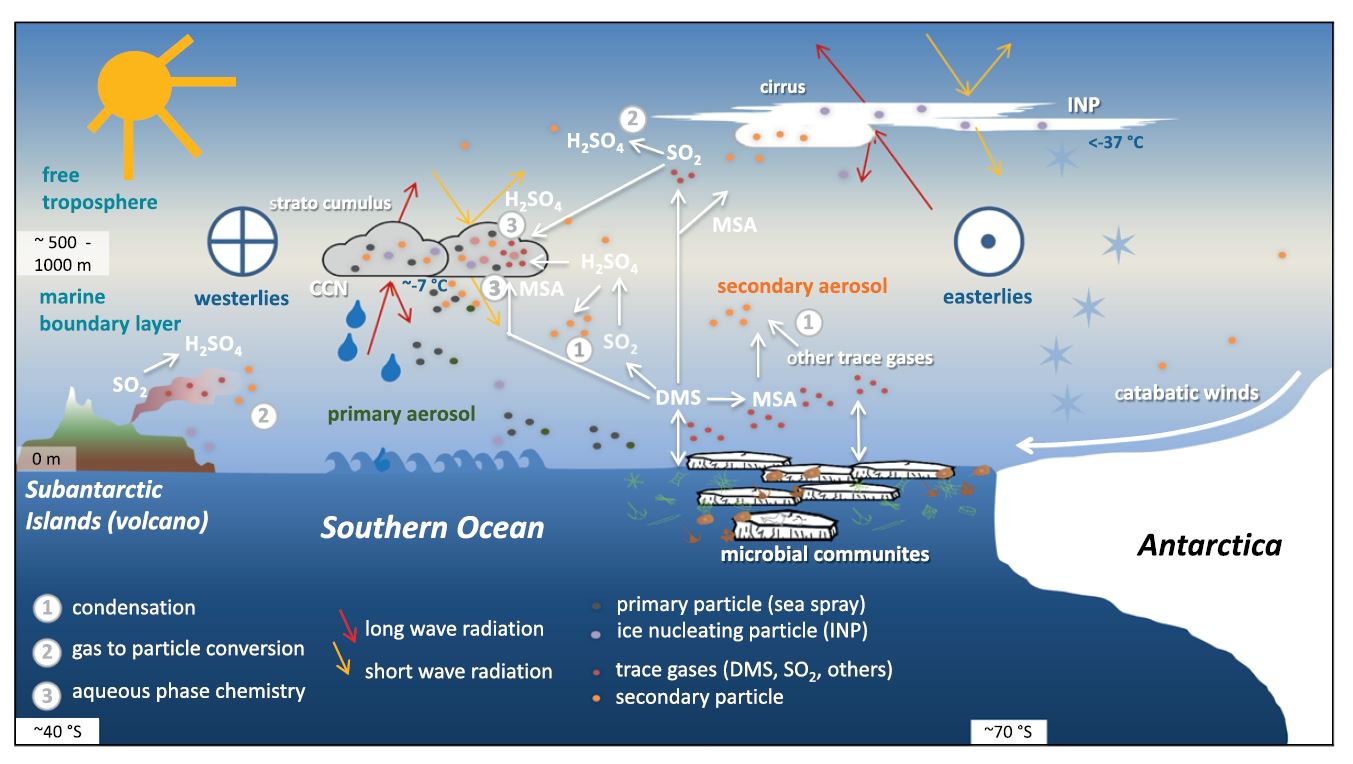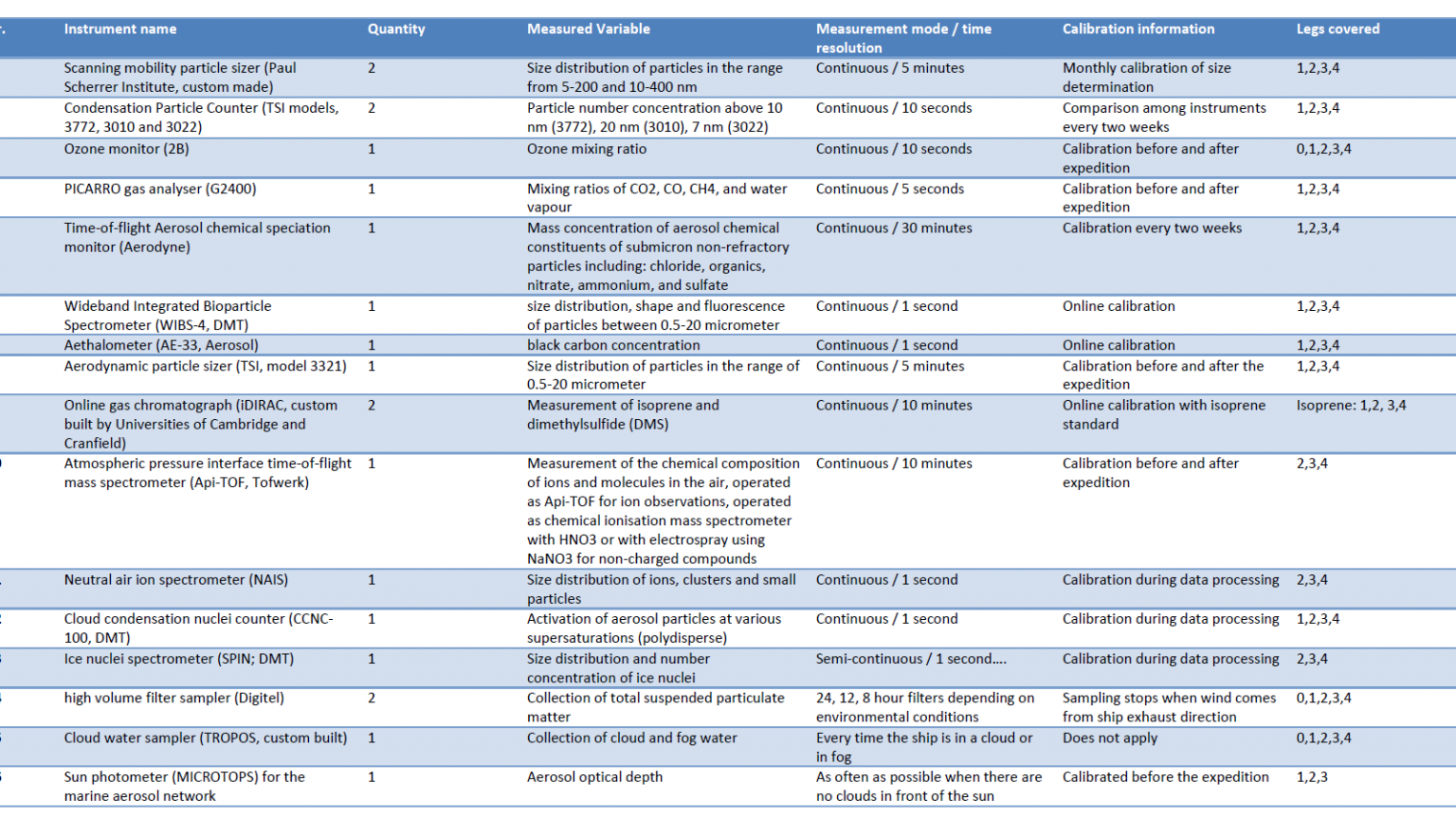
Antarctic Circumnavigation Expedition: Study of Preindustrial-like Aerosol Climate Effects (ACE-SPACE)
Duration: November 2016 – December 2020
Publications
Baccarini, A., Dommen, J., Lehtipalo, K., Henning, S., Modini, R. L., Gysel-Beer, M., Baltensperger, U., Schmale, J.: Low-volatility vapors and new particle formation over the Southern Ocean during the Antarctic Circumnavigation Expedition. Journal of Geophysical Research: Atmospheres, 126, e2021JD035126, 2021, https://doi.org/10.1029/2021JD035126
A. Moallemi, S. Landwehr, C. M. Robinson, R. Simó, M. Zamanillo, G. Chen, A. Baccarini, M. Schnaiter, S. Henning, R. L. Modini, M. Gysel-Beer, J. Schmale, Sources, Occurrence and Characteristics of Fluorescent Biological Aerosol Particles Measured over the Pristine Southern Ocean, Journal of Geophysical Research: Atmospheres, 126, 2021, 10.1029/2021JD034811
Welti A., Bigg E. K., DeMott P. J., Gong X., Hartmann M., Harvey M., Henning S., Herenz P., Hill T. C. J., Hornblow B., Leck C., Löffler M., McCluskey C. S., Rauker A. M., Schmale J., Tatzelt C., van Pinxteren M., Stratmann F., Ship-based measurements of ice nuclei concentrations over the Arctic, Atlantic, Pacific and Southern oceans, Atmospheric Chemistry and Physics, vol. 20, num. 23, p.15191-15206 , 2020-12-08, https://doi.org/10.5194/acp-20-15191-2020
L. A. Regayre, J. Schmale, J. S. Johnson, C. Tatzelt, S. Henning, M. Yoshioka, F. Stratmann, M. Gysel-Beer, D. Grosvenor, and K. S. Carslaw, The value of remote marine aerosol measurements for constraining radiative forcing uncertainty, Atmospheric Chemistry and Physics, 2020-08-28, Vol. 20, num. 16, p. 10063-10072, https://doi.org/10.5194/acp-20-10063-2020
A. Efraim; D. Rosenfeld; J. Schmale; Y. Zhu, Satellite retrieval of cloud condensation nuclei concentrations in marine stratocumulus by using clouds as CCN chambers, Journal of Geophysical Research: Atmospheres, 2020-07-26, https://doi.org/10.1029/2020JD032409
Schmale, J., Baccarini, A., Thurnherr, I., Henning, S., Efraim, A., Regayre, L. A., Bolas, C., Hartmann, M., Welti, A., Lehtipalo, K., Aemisegger, F., Tatzelt, C., Landwehr, S., Modini, R., Tummon, F., Johnson, J. E., Harris, N. R. P., Schnaiter, M., Toffoli, A., Derkani, M., Bukowiecki, N., Stratmann, F., Dommen, J., Baltensperger, U., Wernli, H., Rosenfeld, D., Gysel Beer, M., and Carslaw, K., Overview of the Antarctic Circumnavigation Expedition: Study of Preindustrial-like Aerosols and Their Climate Effects (ACE-SPACE), Bulletin of the American Meteorological Society, 2019, Vol. 100, num. 11, p. 2260-2283, https://doi.org/10.1175/BAMS-D-18-0187.1
See published data sets here: https://zenodo.org/communities/spi-ace/
Scope of project
From December 2016 to March 2017, scientific teams from all over the world boarded the Russian research vessel Akademik Tryoshnikov for an expedition around Antarctica. During the Antarctic Circumnavigation Expedition (ACE), researchers worked on a number of interrelated fields, from biology to climatology to oceanography, to collect data to better predict the future of this continent.
Official project webpage: https://spi-ace-expedition.ch/

Background
The ACE-SPACE project focused on aerosol-cloud interactions. Aerosol-cloud interactions are the least understood anthropogenic influence on climate change (IPCC, 2013.) A major cause of this limited understanding is the poorly quantified state of aerosols in the pristine preindustrial atmosphere, which defines the baseline against which anthropogenic effects are calculated. The uncertainty in aerosol induced radiative forcing (± 0.7 from a mean of -0.55 W/m2) is twice the uncertainty for CO2 (± 0.35, mean +1.68 W/m2). Also, models grossly underestimate cloud solar reflectance there, by as much as 30 W m-2 during summer. Hence, ACE-SPACE is designed with the goal to reduce the uncertainty in the effects of aerosols on climate change by exploring preindustrial-like conditions which can almost only be found in the Southern Ocean. The Southern Ocean is the most pristine aerosol environment on Earth, but almost the entire region remains unsampled. The ACE expedition provided a unique and unprecedented opportunity to prove or dismiss this hypothesis.
Research Questions
- How preindustrial-like is the atmosphere over the Southern Ocean for short-lived species such as aerosols?
- What are the sources of cloud condensation nuclei (CCN)? E.g. sea spray, microbial emissions, down-mixing of particles from the free troposphere, new particle formation or long-range transport.
- Can we improve predictability of sea spray emissions by including sea state information?
- Are fluorescent particles and ice nucleating particles correlated?
- Can we achieve closure between satellite derived droplet number concentrations and in situ measured CCN for coupled cloud cases?
- Can we constrain the uncertainties of global radiative forcing from aerosol-cloud interactions with this data set?

Figure 2 from Schmale et al. (2019)
First results
- The Southern Ocean features extremely high variability in aerosol properties, hence studies from one sector of the Southern Ocean are not necessarily representative for other sectors or the whole region.
- Microbial emissions play in important role for cloud condensation nuclei. “Hot spot” areas were near the coast of Antarctica and islands in the Indian Ocean.
- Models are lacking processes related to microbial emissions which makes them perform poorly in the simulation of CCN in some locations (e.g. underestimation of by a factor of 10).
Measurements and Instruments
We deployed our laboratory container on the ship and pursued a survey-like measurement strategy, that is measuring round the clock with high time-resolution.
Below table provides details on the instruments and parameters we observed.

Partners

Sponsors

